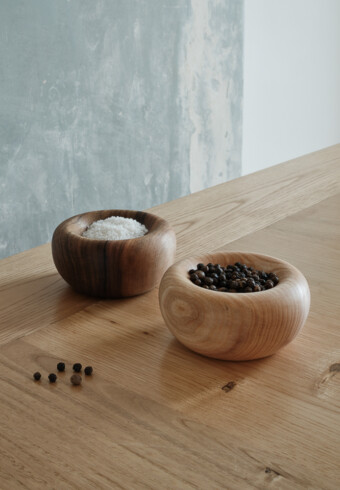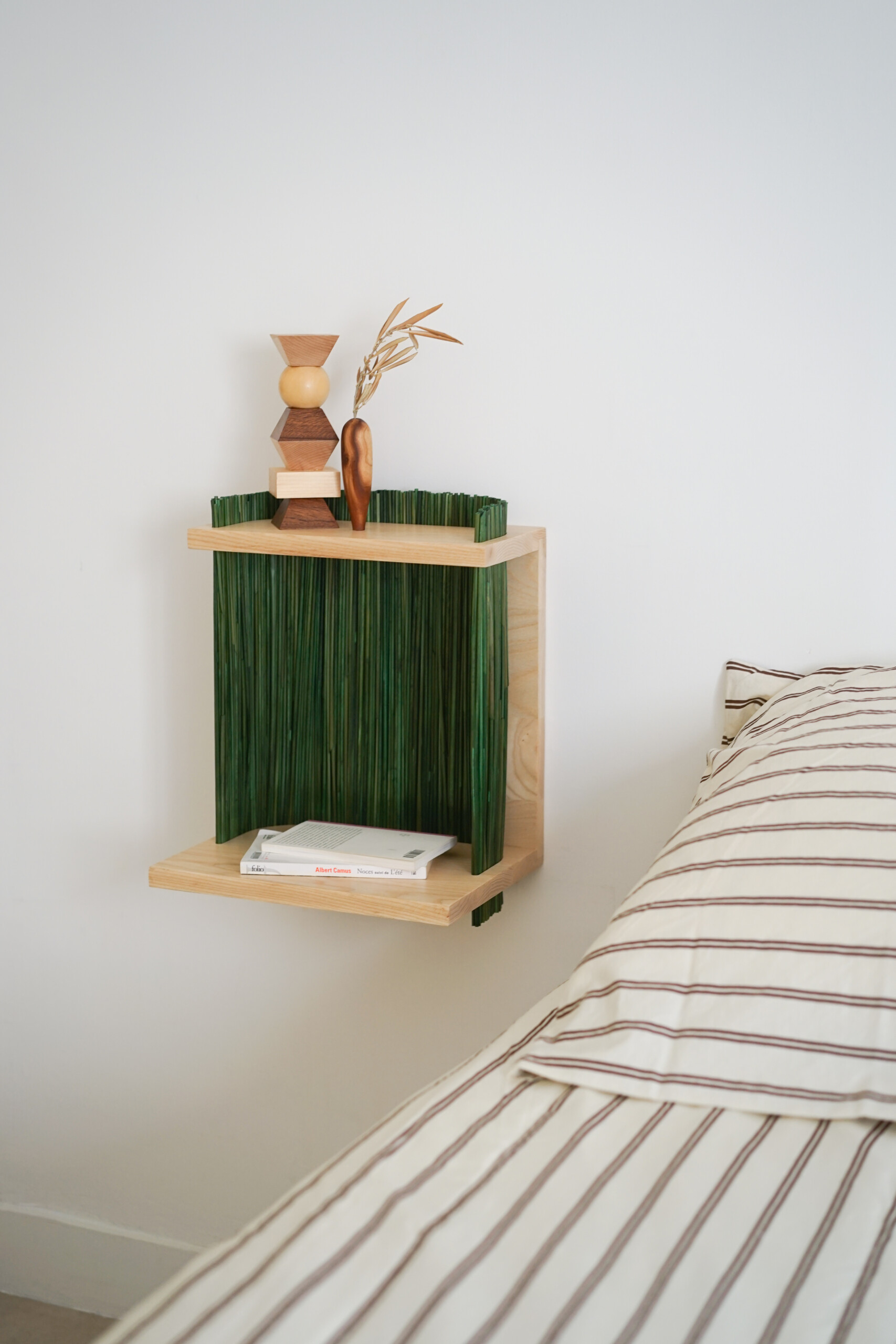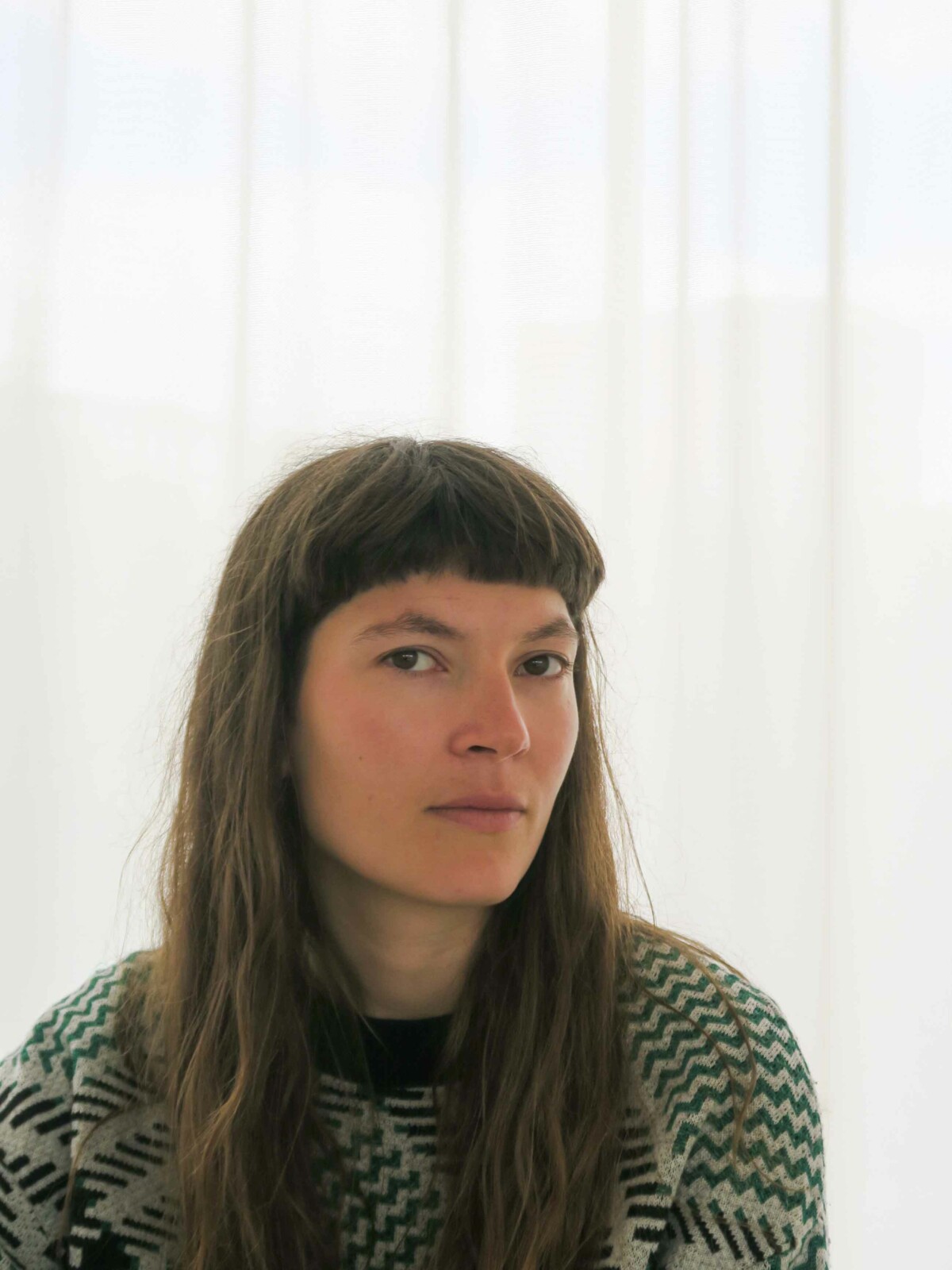
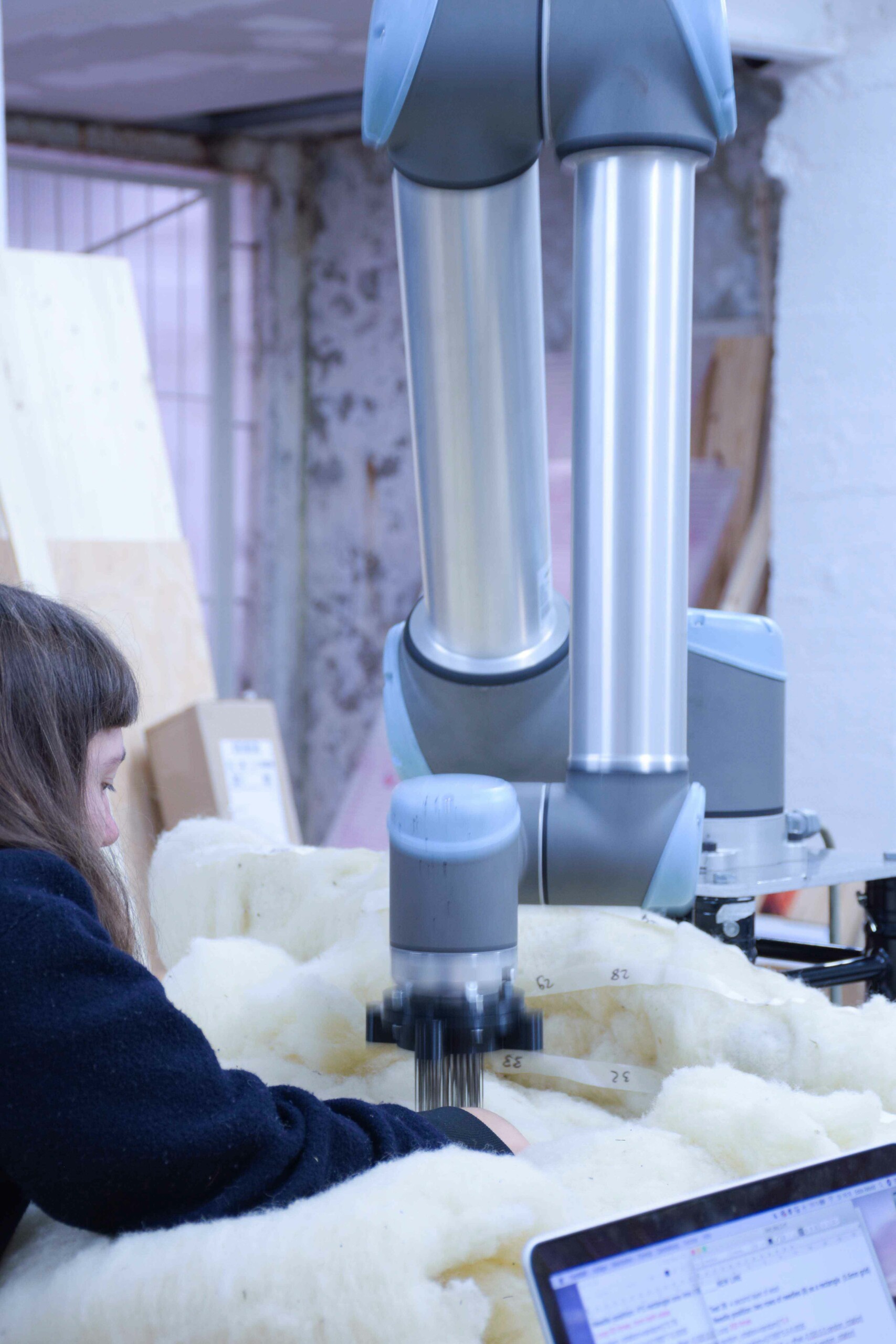
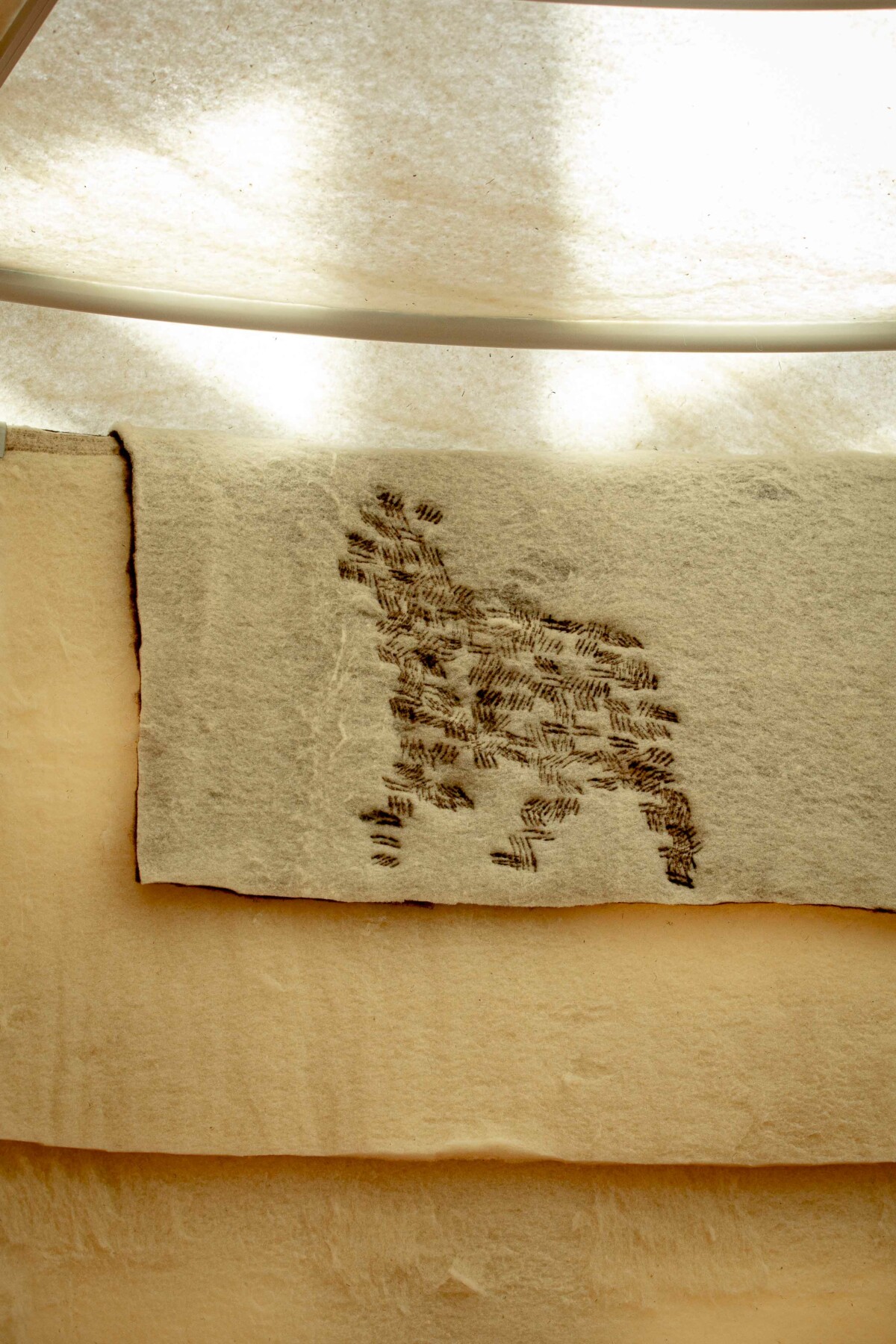
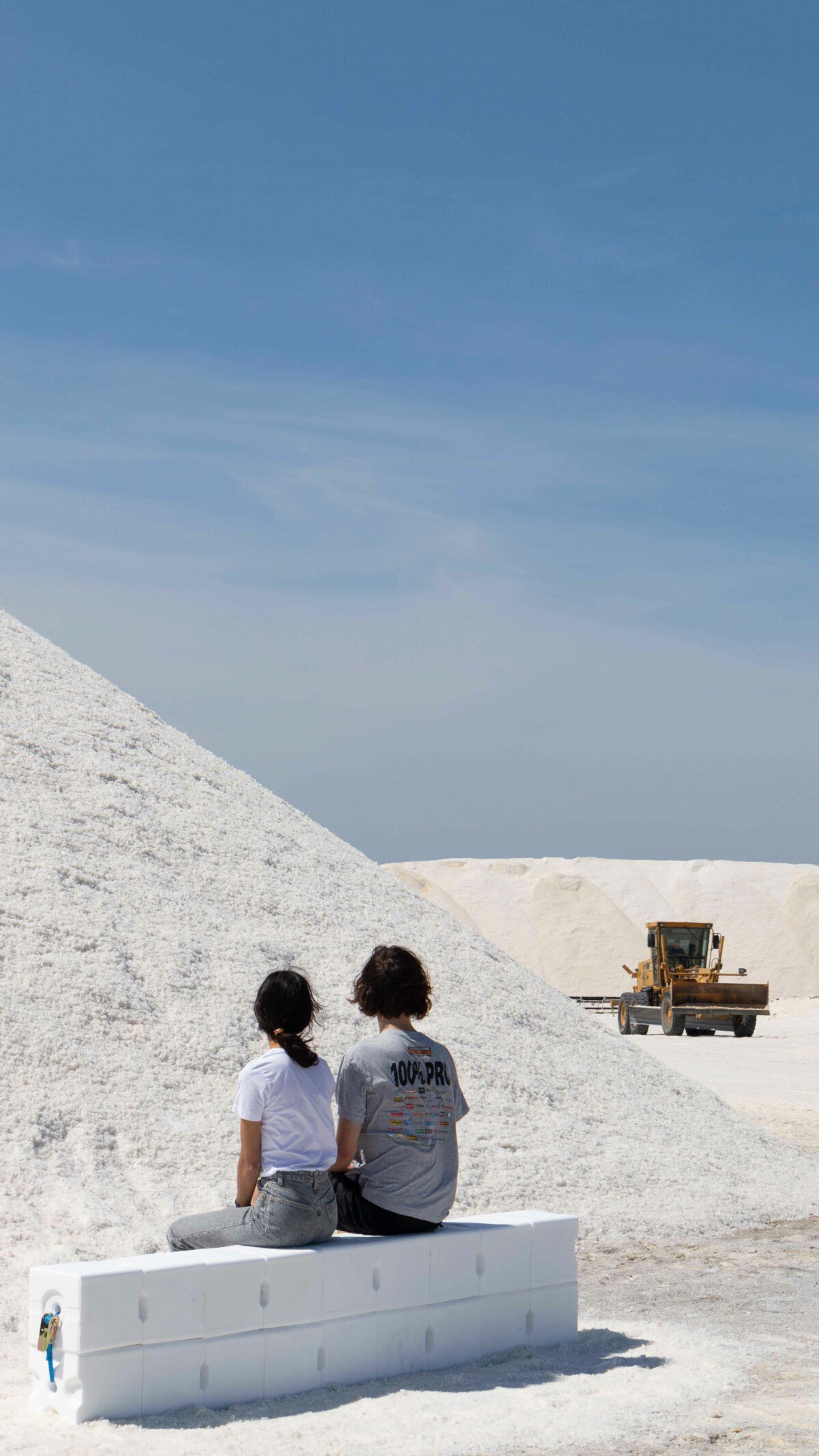
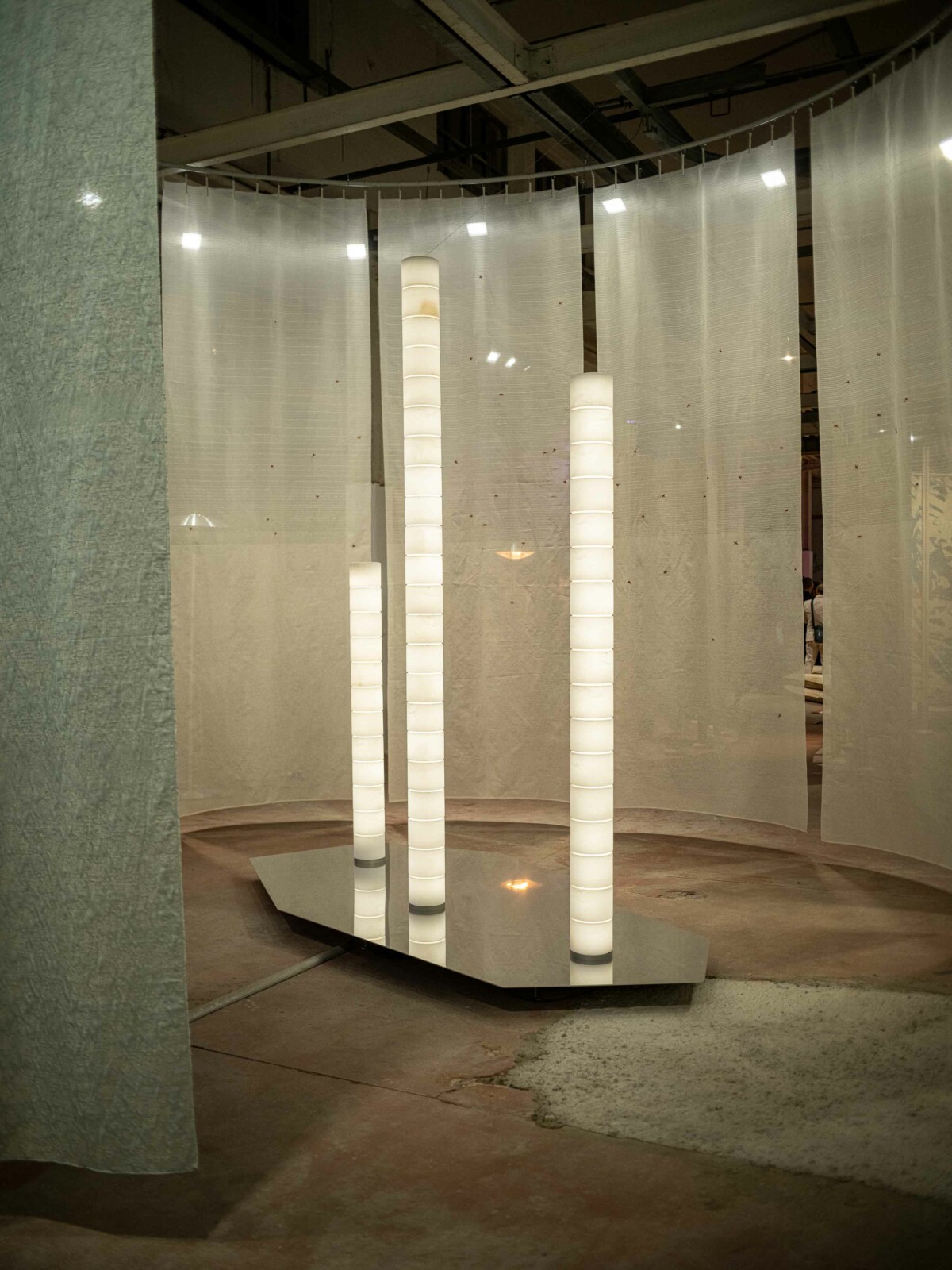
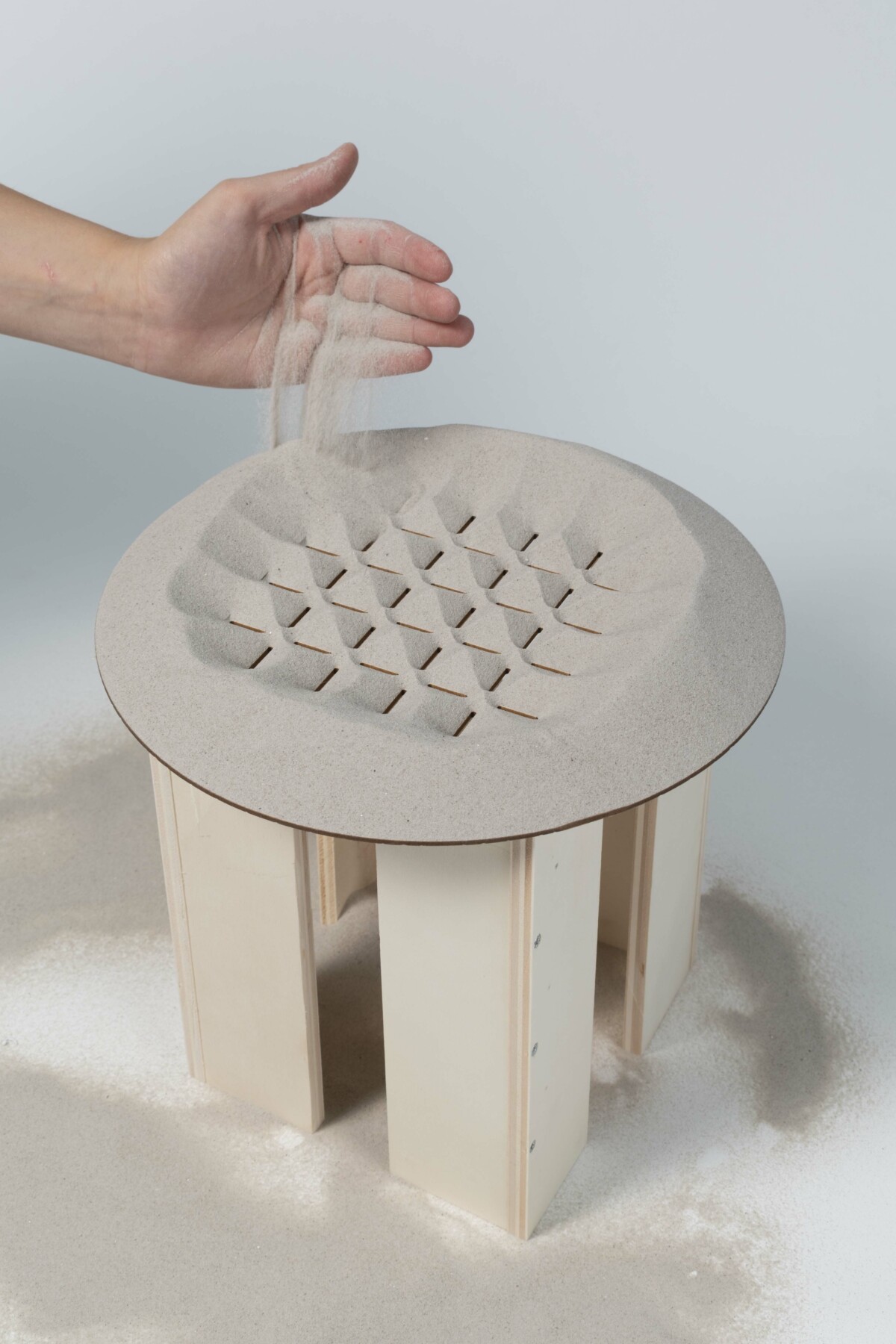
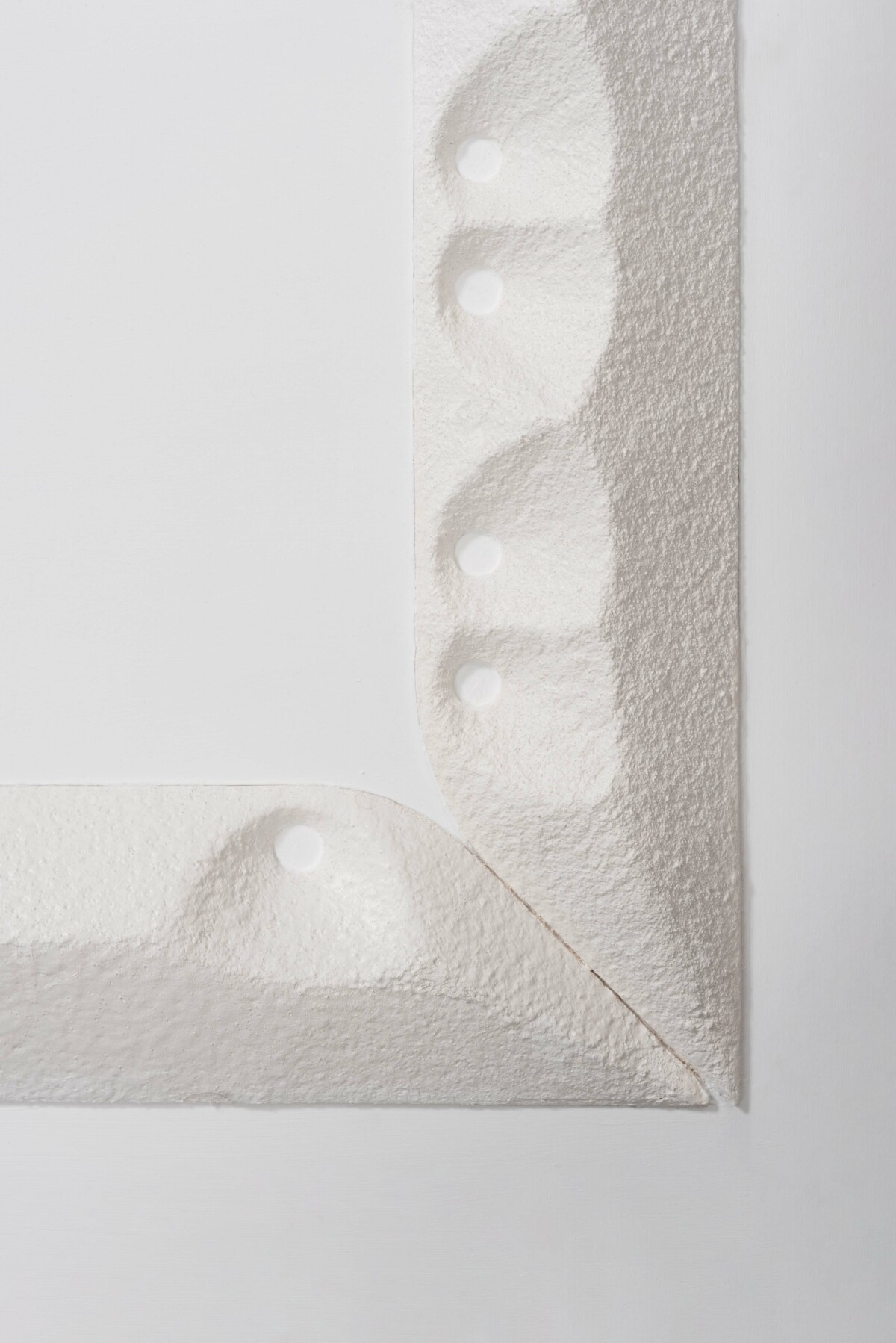
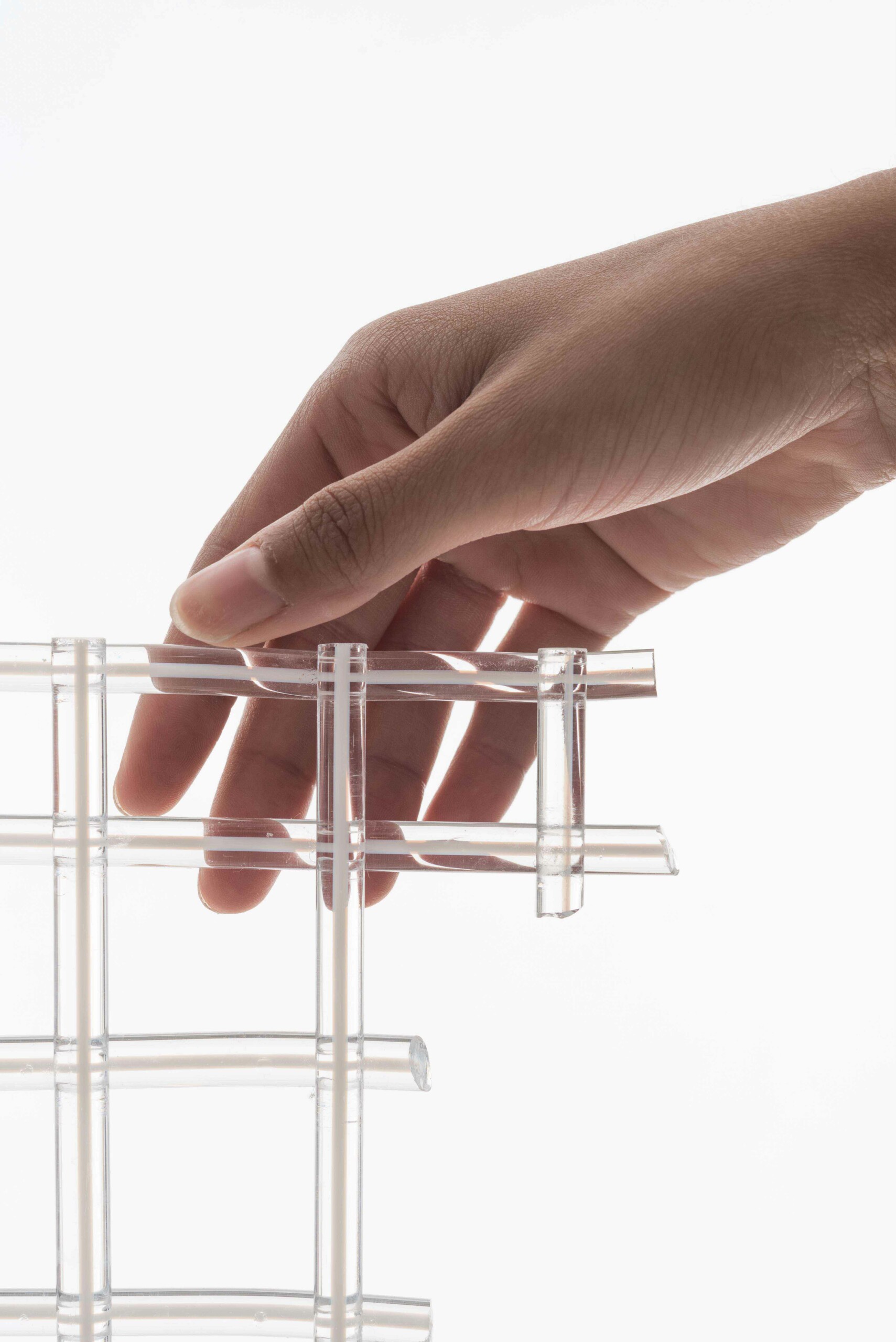
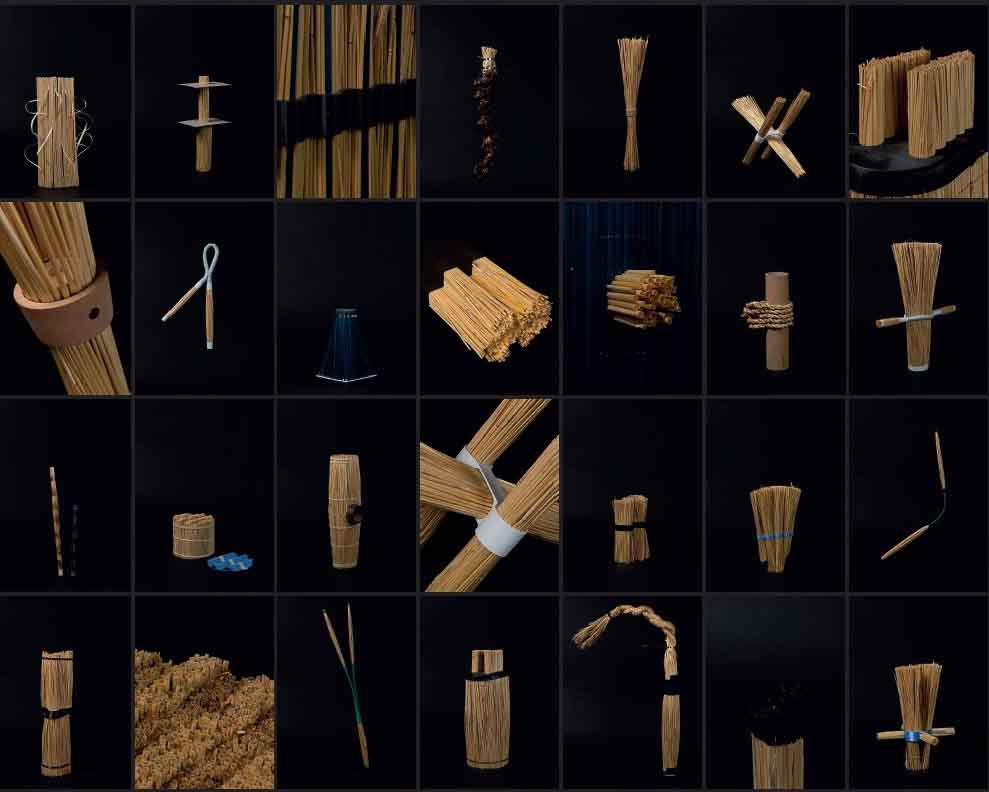
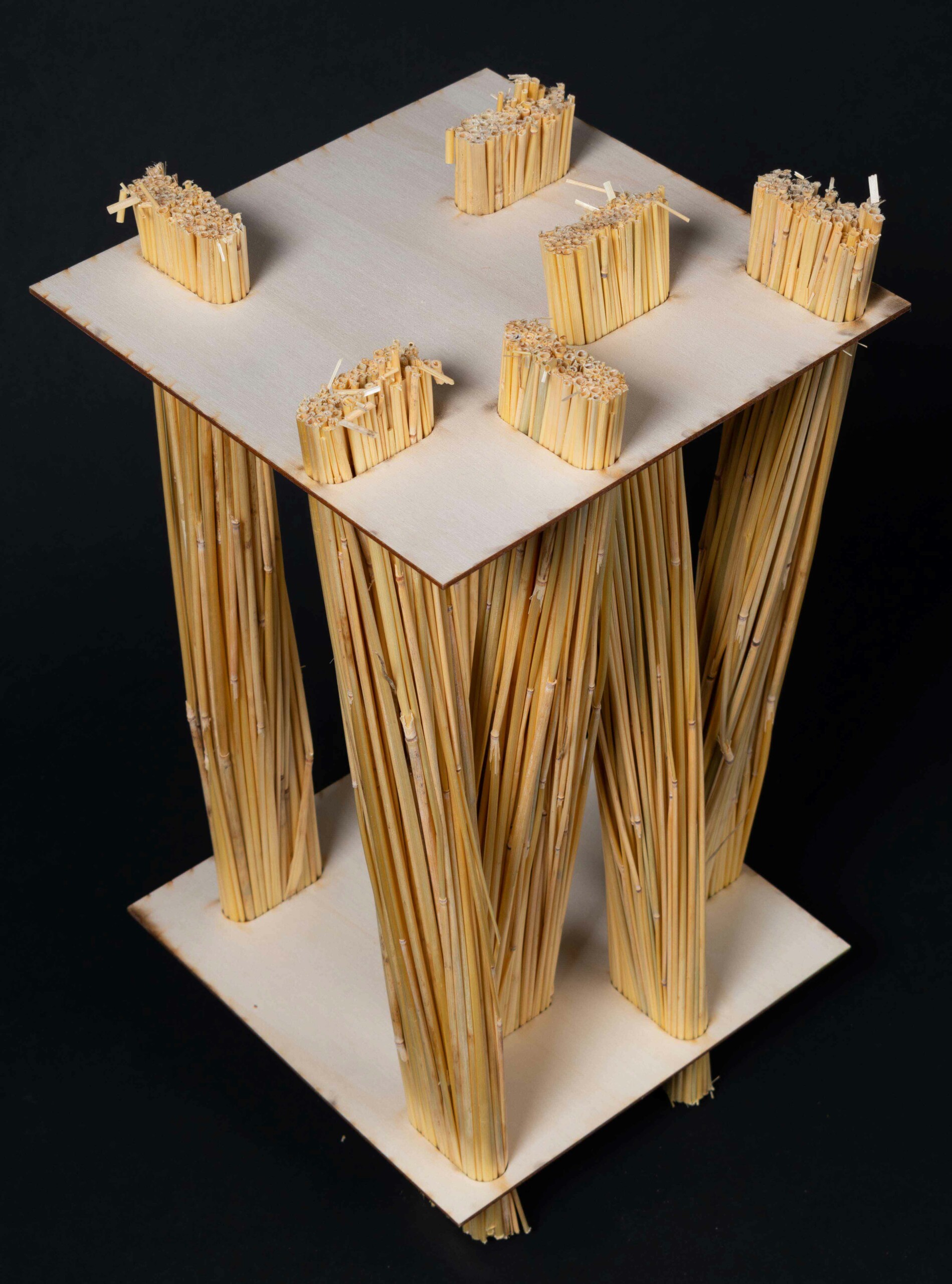
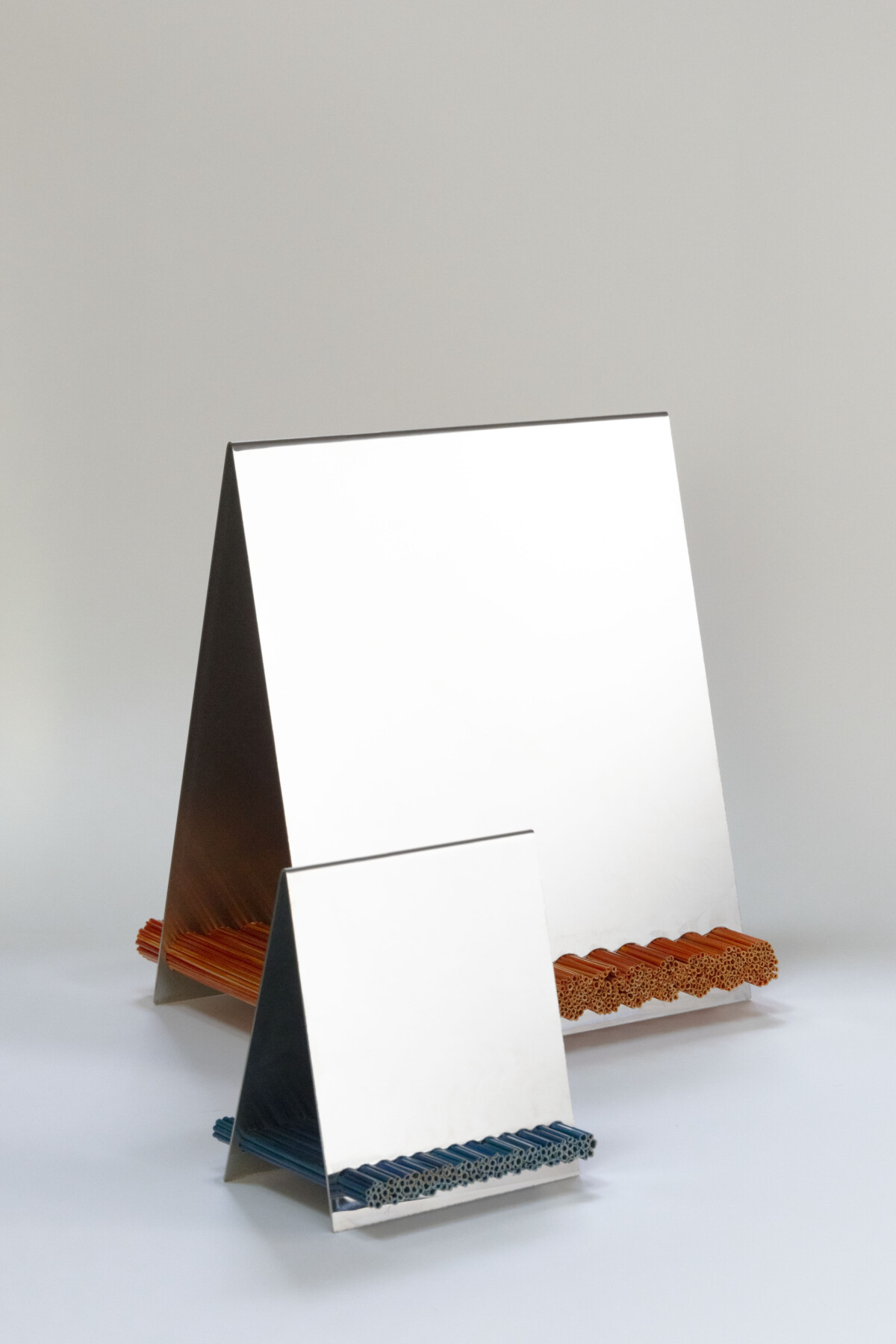
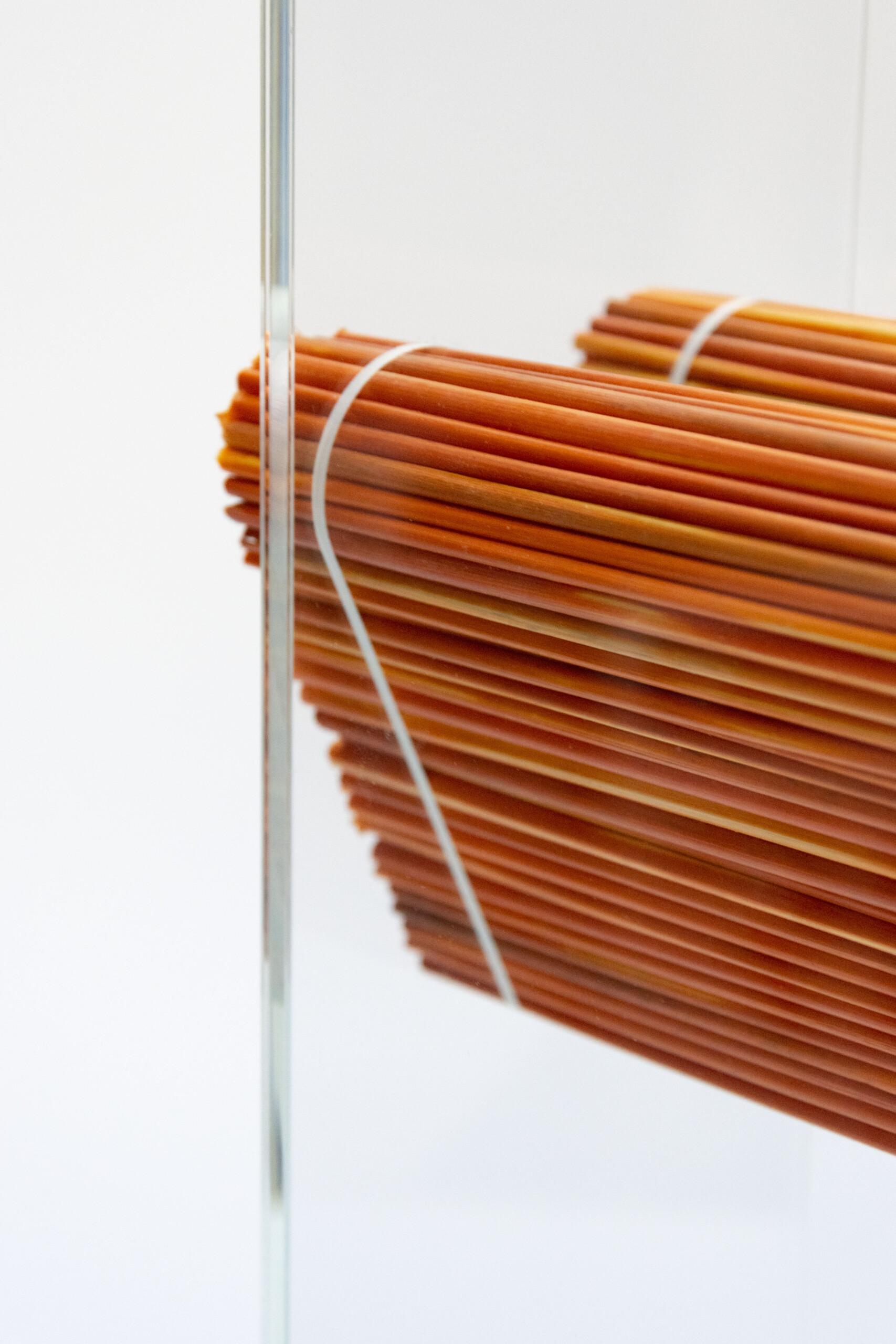
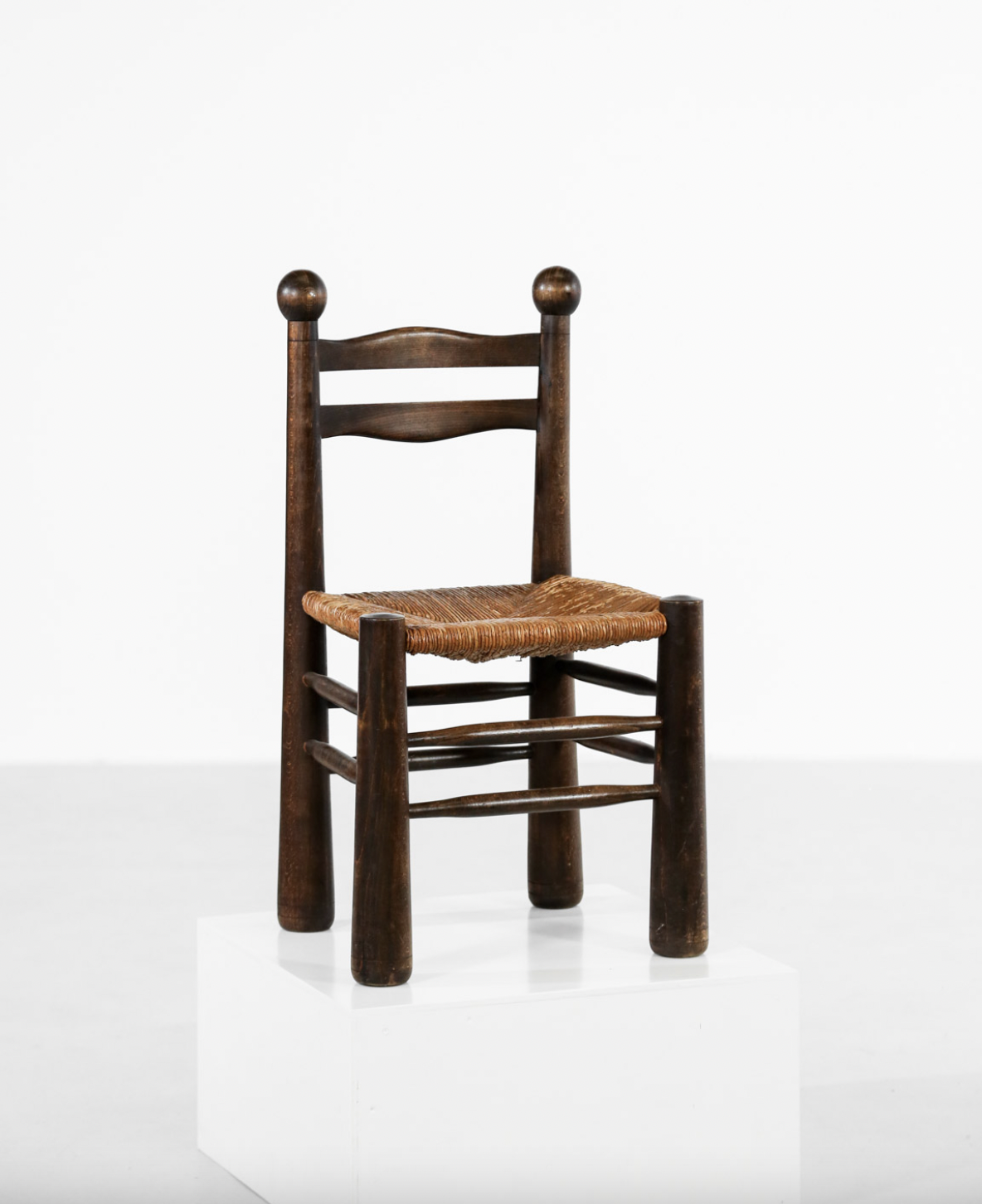

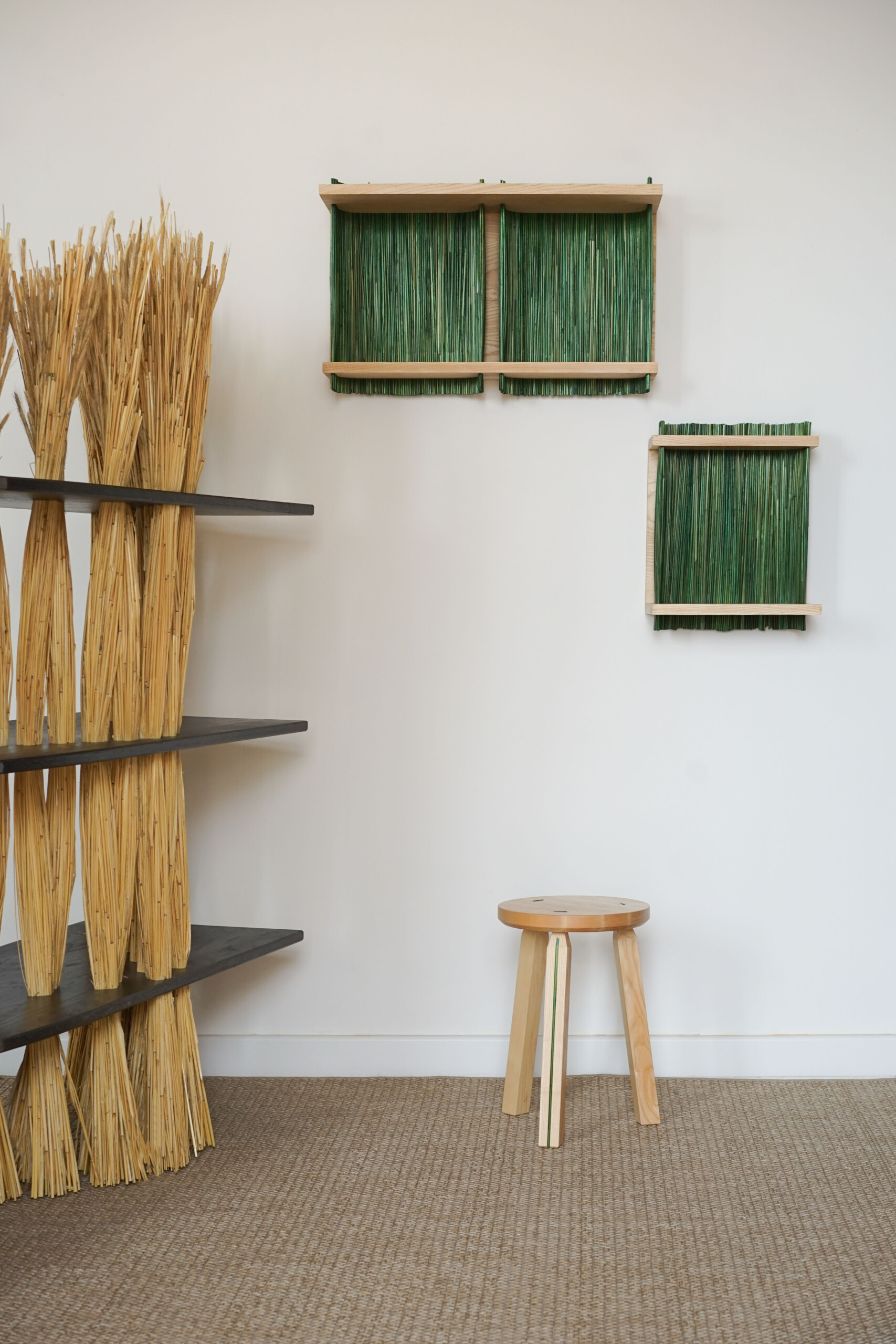
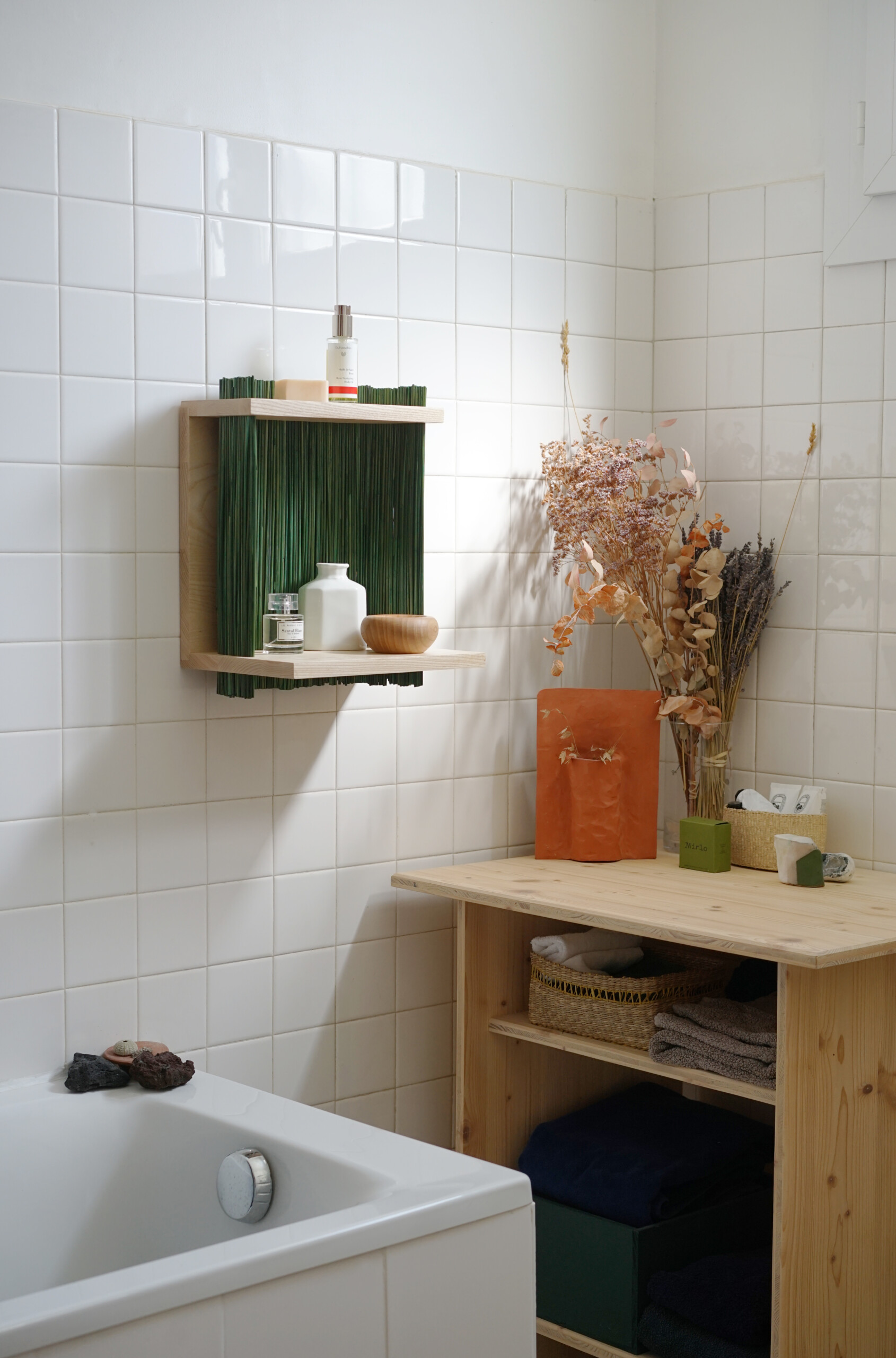
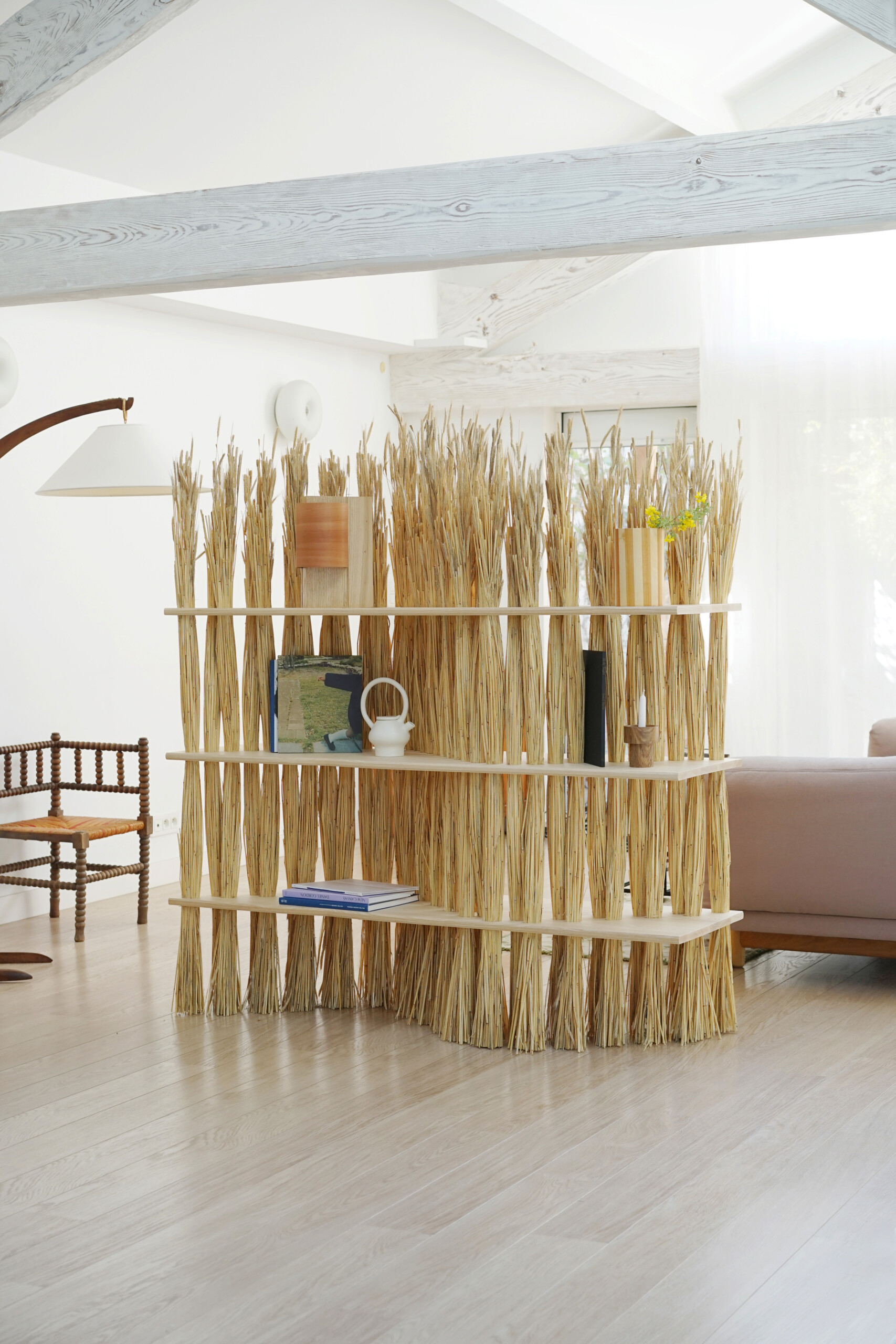
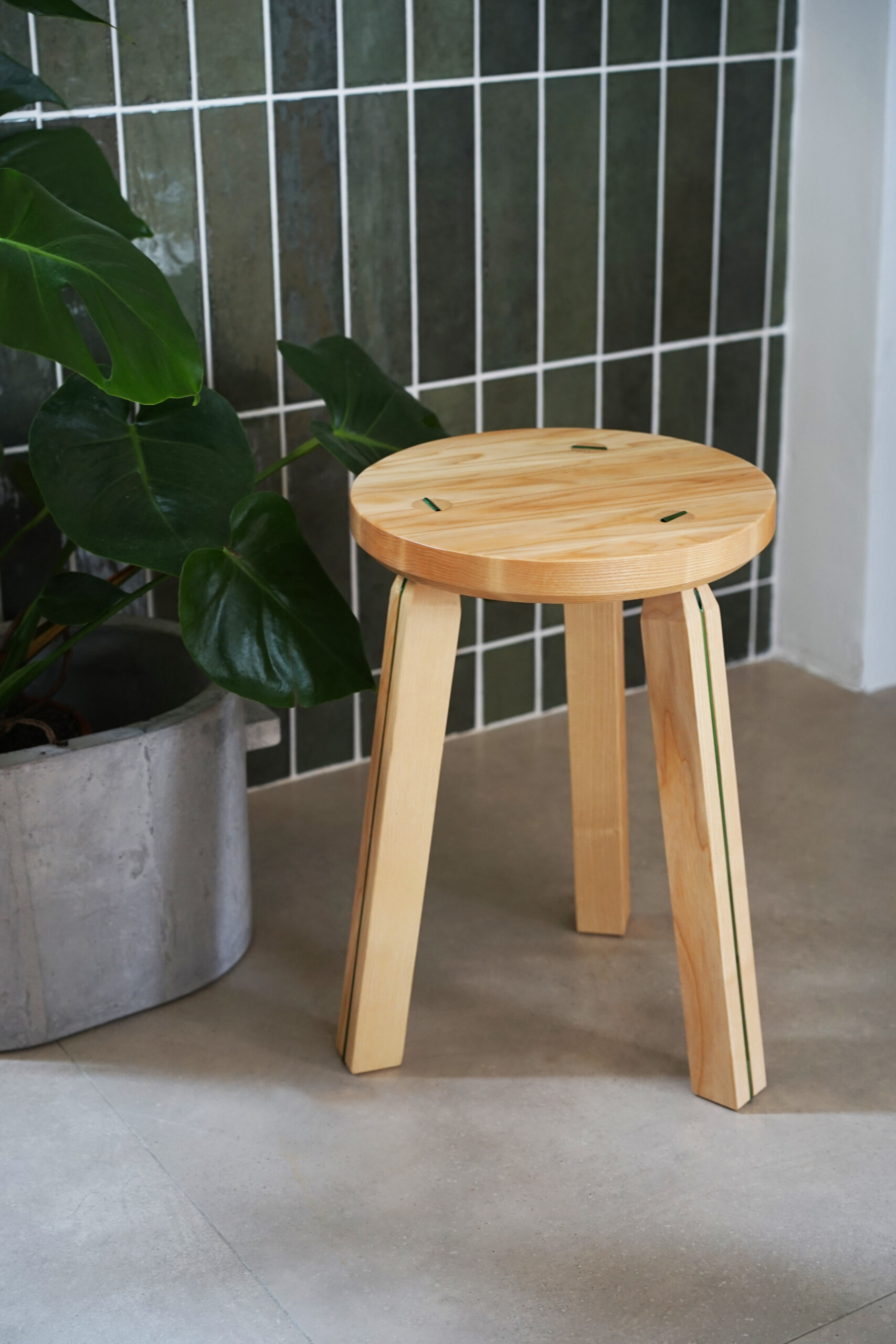
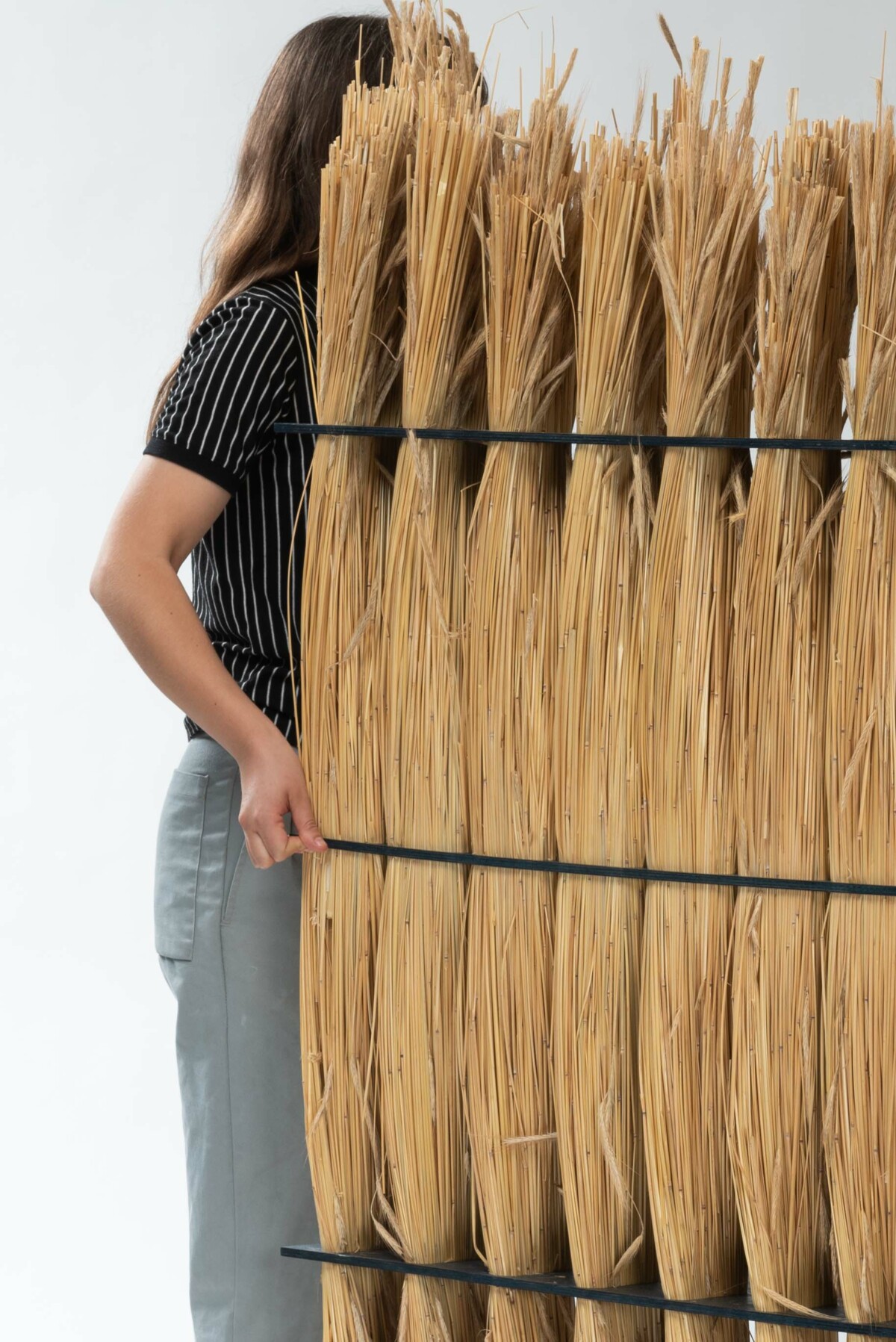
Sasha Parent

Sacha is a designer based between Arles and Paris. Her journey led her to question our relationship to natural materials. We are unveiling together in the spring of 2023 a new range of furniture developed for Éditions OROS, combining solid wood and rye straw. We took the opportunity to ask him about his creative process.
Hello Sacha, could you present?
My name is Sacha and I'm a designer. Graduated from ENSCI les Ateliers in 2021, my design studio is still based in Paris, even if in fact, I'm not there much anymore. For the past few months, I have been traveling to different parts of France to carry out research projects with strong local roots, towards Arles, Marseille, Nantes and Limoges.
During my studies, I had the chance to develop an appetite for textiles through the Duperré school, but also for clay and glass during an exchange at the National Institute of Design in Ahmedabad, India. More generally, it was my training at the ENSCI that allowed me to anchor my production around the question of formatting processes and creation protocols. Since then, I have been developing personal research on what I call “material geometries”: it allows me to associate a simple geometry with each piece of material, in order to set up co-creation protocols to generate volumes.
Before pursuing my own research, I worked for two years for Studio Bouroullec where I was one of Ronan Bouroullec's assistants. There, I worked on projects with varied and very identifiable materials: textiles, earth, glass, aluminium… Today, I collaborate in particular with the Atelier Luma where I develop various research projects relating to salt and wool. This work resulted in the production of micro-architectures highlighting the respective properties of these two elements typical of the Camargue. As for the rest of my work, the question of the mode of formatting is crucial there and mingles with a desire for territorial anchoring.
How would you define your job?
As I mentioned throughout my career, my work is related to research in design. A research which, as with OROS, seeks to penetrate the spheres of our daily life and therefore of the production of objects or furniture. What interests me is meticulously analyzing the processes and shaping methods that allow us to produce a whole host of things and not just in the “product” categories.
I thus seek to question the way in which we produce contemporary aesthetics. The question of vocabulary and ornamentation is of particular interest to me. Questioning which results in an attention paid to the tools usually associated with the practice of the designer. 3D and the uniformity of aesthetics it has generated is one of the things that my work deals with by setting up co-creation protocols. I then draw the conditions of expression of a material which will then generate volumes: I then simply highlight the uses that result from it. This is what happens with the Amas shelf.
Where does your interest in rye straw come from?
My interest in rye straw stems from this question of protocol and material co-creation. For me, rye straw is a material line that serves as a support for a voluminal research by accumulation. The volumes produced are defined by the behavior of this material without imposing a design on it. To accompany it, I simply draw its conditions of expression, imagining series of matrices that allow me to revolve around the archetype of the fagot.
Following the presentation of this shelf, we decided to develop other types of furniture using rye straw and solid wood. What was your creative process?
Secondly, these volumes of straw become structuring but natural extrusions that allow me to make them, in the case of the Amas shelf, the feet of a shelf. It's a bit my way of working that I apply to the different materialities and/or formatting processes that are within my reach. I work by iteration in order to reintroduce certain materials into our everyday objects.
Afterwards, there are more directly the aesthetic and narrative qualities of straw that interest me. Its brilliance, its vibrations, its flexibility but also all the “regional furniture” that had taken over… The straw chair is a very strong piece of furniture that I kept in mind throughout the project. By positioning itself vis-à-vis this archetype of mulching, the entire collection designed for OROS allows straw to reintegrate our interiors. Each piece seeks to find a balance between the use of rye straw and that of wood: one then the other takes over; both make it possible to emphasize each other.
The development of these 3 pieces was marked by our common desire to anchor their production on a local scale. This is what made it possible to move the project from the state of research in design to edited furniture with, I believe, a real positioning in the mode of production. The straw is grown and harvested by hand in France, and the ash is produced and shaped in the south of France.
We also experimented with different natural colors for the wood. Can you tell us more about this process?
During the various textile developments that I have already done, whether at the Bouroullecs or for Atelier Luma, the question of color and therefore dyes has always been crucial. As these experiences progressed, I was notably introduced to vegetable dyeing techniques. For OROS and the treatment of wood, it seemed important to me to reintegrate this question of color through natural colorization.
The tannins, which are more or less present in the different wood species, can react on contact with different agents. During these reactions, the tannins color the fiber of the solid wood. We thus obtain palettes of colors, more or less vivid, but always extremely surprising. So we did a lot of testing with oak, chestnut, and finally ash, to find the wood that would meet our different expectations.
For rye straw, the approach was similar. We then worked with Jean Luc Rodot, who is the last producer of rye straws dedicated to furniture in France. Usually he works for thatched roof builders or establishments producing straw marquetry. For our project, he helped us to develop colors produced by vegetable dyes.
How do you view the modern domestic world and how do you think this furniture can fit into it?
I think that overall our interiors have become much impoverished. Whether from a design or material point of view, most of the objects that surround us are looking for an economic and productive efficiency that forgets that they will be used. I deeply believe in the phenomena of attachment that bind us to material things, that's surely why from the very beginning I wanted to produce objects. So I'm rather pessimistic (laughs)! But at the same time, I have always seen initiatives springing up that seek to give value to everyday objects: that's what I'm trying to do too.
The Amas shelf is a UFO whose presence seeks to confront us with the standardization of our interiors. The wall shelves are softer versions. The stool, meanwhile, plays the game of subtlety and reference: it enters the middle of the others without being noticed too much. It may be a little less direct than the other two, but that's how effective it is for me...
How do you imagine design but also French craftsmanship evolving?
Craftsmanship is know-how, it is quality. This is what allows us to pay attention to the things we produce. So for me, contemporary design needs to re-think craftsmanship. I fully understand the formal fascinations that the industry engenders – I am a victim of them too (laughs) – but the craftsmanship, and the styles that it has allowed to engender through different eras, makes it possible to re-situate our productions. All these incredible things make it possible to stimulate the shapes and volumes that we create. Craftsmanship pushes us, as designers, to surround ourselves with more knowledgeable, more skilful, more ingenious people, in order to produce better. That's what I love about working with artisans is that the projects that come out are much better, and not just for design issues, humility as well.
France is a country full of know-how, passionate men and women who are doing incredible things locally… That's why although I'm officially based in Paris, I'm not really there anymore.


















- Photographer: 3 and 5 Joana Luz, 13 Danke, 15 to 18 Emmanuelle Roule, 19 Véronique Huyghe
- Location: Paris and Arles, France
- Website: https://sachaparent.cargo.site
Share
